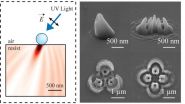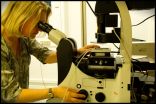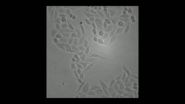(Press-News.org) Physical activity increases oxidative stress, and therefore, as an antioxidant vitamin C might have particularly evident effects on people who are participating in vigorous exercise. In several studies, vitamin C administration attenuated the increases in oxidative stress markers caused by exercise. Furthermore, vitamin C is involved in the metabolism of histamine, prostaglandins, and cysteinyl leukotrienes, all of which appear to be mediators in the pathogenesis of exercise-induced bronchoconstriction.
A meta-analysis of three studies found that vitamin C halved post-exercise FEV1 decline in participants who suffered from exercise-induced bronchoconstriction. Five other studies examined subjects who were under short-term, heavy physical stress and a meta-analysis revealed that vitamin C halved the incidence of respiratory symptoms. Another trial reported that vitamin C halved the duration of the respiratory symptoms in male adolescent competitive swimmers.
FEV1 is the standard pulmonary function outcome for assessing whether a person suffers from exercise-induced bronchoconstriction. However, exercise-induced decline in FEF25-75 is twice as great as the decline in FEV1. FEV1 measures the large-airway obstruction, whereas FEF25-75 measures small-airway obstruction. Therefore, FEF25-75 or the closely related FEF50 might provide relevant additional information about the possible effects of vitamin C.
Harri Hemila, MD, PhD, of the University of Helsinki, Finland, carried out a secondary analysis of a study which had 12 participants. The participants had asthma, were on average 26 years, and suffered from exercise-induced bronchoconstriction. The FEV1 and FEF60 levels before and after exercise were reported on vitamin C and placebo days, but the data was not thoroughly analyzed originally.
In five out of the 12 participants, exercise caused a decline greater than 60% in FEF60. Such a dramatic FEF60 decline indicates that the absolute post-exercise level of FEF60 becomes an important outcome in its own right, in addition to its change from the pre-exercise level. Vitamin C administration increased the post-exercise FEF60 level in these 5 participants by between 50% and 150%. In contrast, no mean difference between the vitamin C and placebo days was detected in the other 7 participants.
- The increase in post-exercise FEF60 level by vitamin C is a novel finding, which indicates that vitamin C may have substantial effects on the small airways, Dr. Hemilä states.
Dr. Hemila concludes that "given the safety and low cost of vitamin C, and the consistency of positive findings in the nine randomized trials on vitamin C against exercise-induced bronchoconstriction and respiratory symptoms, it seems reasonable for physically active people to test whether vitamin C is beneficial on an individual basis, if they have documented exercise-induced bronchoconstriction or suffer from respiratory symptoms such as cough or sore throat after taking vigorous exercise."
INFORMATION:
A new analysis of an important trial of the blood pressure-lowering procedure, renal denervation, shows that the main results may have been affected by a number of confounding factors that partially explain the unexpected blood pressure responses in patients.
The analysis, published in the European Heart Journal [1], identified factors in the SYMPLICITY HTN-3 trial, such as variations in the way the procedure was performed and changes in patients' medications and drug adherence, which may have had a significant impact on the results.
Results of the SYMPLICITY HTN-3 ...
An international research team that includes researchers from Lawrence Livermore National Laboratory has captured the highest-resolution protein snapshots ever taken with an X-ray laser, revealing how a key protein in a photosynthetic bacterium changes shape when hit by light.
Human biology is a massive collection of chemical reactions and all involve proteins, known as the molecules of life. Scientists have been moving steadily toward their ultimate goal of following these life-essential reactions step by step in real time, at the scale of atoms and electrons.
"These ...
(SAN FRANCISCO, December 6, 2014) - Novel treatments that harness the body's own immune cells to attack cancer cells demonstrate safe and durable responses in patients with relapsed and treatment-resistant blood cancers, according to data presented today at the 56th American Society of Hematology (ASH) Annual Meeting and Exposition.
Therapies designed to target the immune system and ignite the body's own disease-fighting mechanisms have become an increasingly promising field of study, particularly in blood cancers. While the immune system can easily recognize viruses ...
Researchers from North Carolina State University have developed a new lithography technique that uses nanoscale spheres to create three-dimensional (3-D) structures with biomedical, electronic and photonic applications. The new technique is significantly less expensive than conventional methods and does not rely on stacking two-dimensional (2-D) patterns to create 3-D structures.
"Our approach reduces the cost of nanolithography to the point where it could be done in your garage," says Dr. Chih-Hao Chang, an assistant professor of mechanical and aerospace engineering ...
Nature's ingenious systems: A layer of cells called endothelial cells lines the interior of blood vessels. When blood flows through the vessels, such cells only divide to replace dead cells. However, if there is a blood clot preventing blood from flowing across the endothelial cells, they begin to divide more actively. New research from the Niels Bohr Institute demonstrates that cell division is very ordered. The new cells move away from each other and create a dynamic movement with eddies in a large area. This presumably helps to widen the vessel around the blockage. The ...
A new study by researchers at the University of Exeter has found early warning signals of a reorganisation of the Atlantic oceans' circulation which could have a profound impact on the global climate system.
The research, published today in the journal Nature Communications, used a simulation from a highly complex model to analyse the Atlantic Meridional Overturning Circulation (AMOC), an important component of the Earth's climate system.
It showed that early warning signals are present up to 250 years before it collapses, suggesting that scientists could monitor ...
Cancer Research UK scientists have discovered a new line of defence used by cancer cells to evade cell death, according to research published in Nature Communications* today (Monday).
The team identified a critical pathway of molecular signals which throw a lifeline to cancer cells, enabling them to survive even though they contain vast DNA errors which would usually trigger cell death.
The PKCƐ signal pathway**, which is used by cancer cells but rarely by normal cells, could be important in targeting some cancer cells as they rely on this pathway to survive.
The ...
UPTON, NY-A team of scientists from the U.S. Department of Energy's (DOE) Brookhaven National Laboratory, Columbia Engineering, Columbia Physics and Kyoto University has discovered an unusual form of electronic order in a new family of unconventional superconductors. The finding, described in the journal Nature Communications, establishes an unexpected connection between this new group of titanium-oxypnictide superconductors and the more familiar cuprates and iron-pnictides, providing scientists with a whole new family of materials from which they can gain deeper insights ...
A new analysis has found that while clinical trial data support omitting radiation treatments in elderly women with early stage breast cancer, nearly two-thirds of these women continue to receive it. The findings are published early online in Cancer, a peer-reviewed journal of the American Cancer Society.
Results published in 2004 from a large, randomized clinical trial showed that adding radiation therapy to surgery plus tamoxifen does not reduce 5-year recurrence rates or prolong survival in elderly women with early stage tumors. Despite the findings, many doctors still ...
DURHAM, N.C. - Women over the age of 70 who have certain early-stage breast cancers overwhelmingly receive radiation therapy despite published evidence that the treatment has limited benefit, researchers at Duke Medicine report.
The study suggests that doctors and patients may find it difficult to withhold treatment previously considered standard of care, even in the setting of high quality data demonstrating that the advantages are small.
"The onus is on physicians to critically analyze data to shape our treatment recommendations for patients, weighing the potential ...



